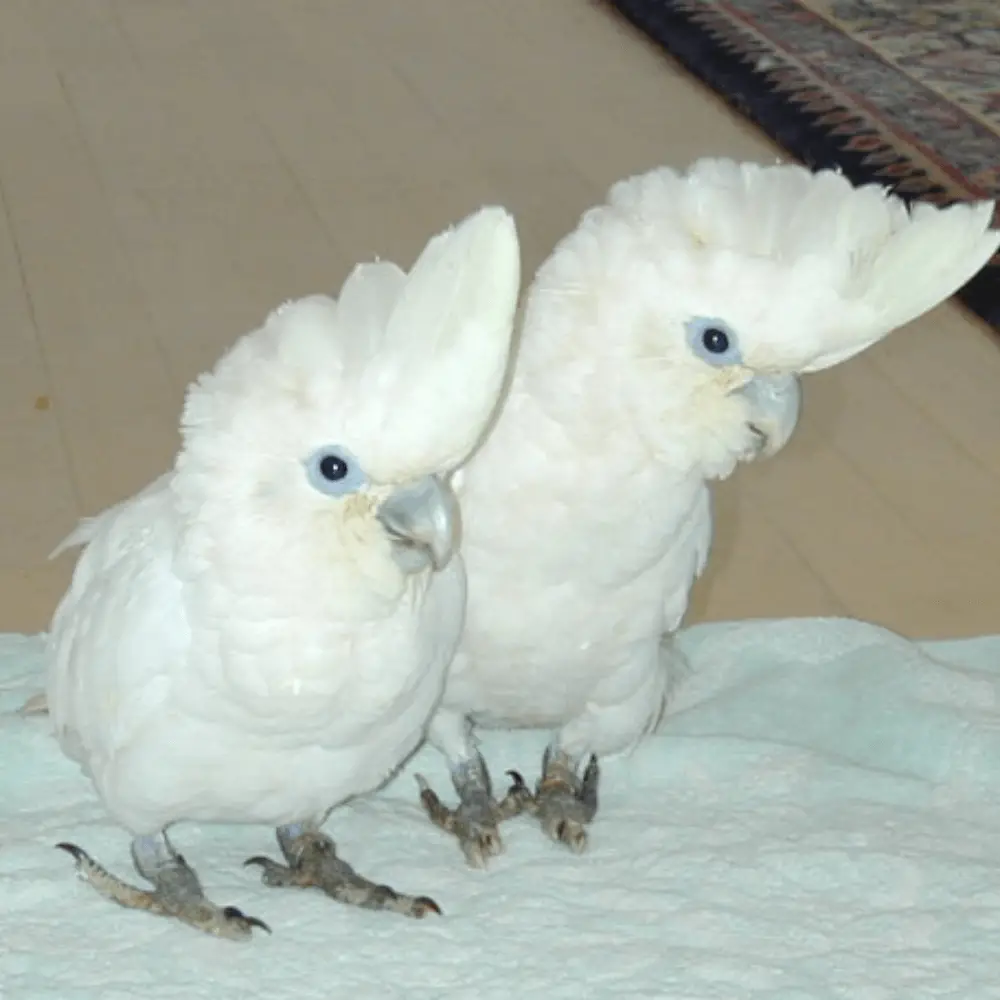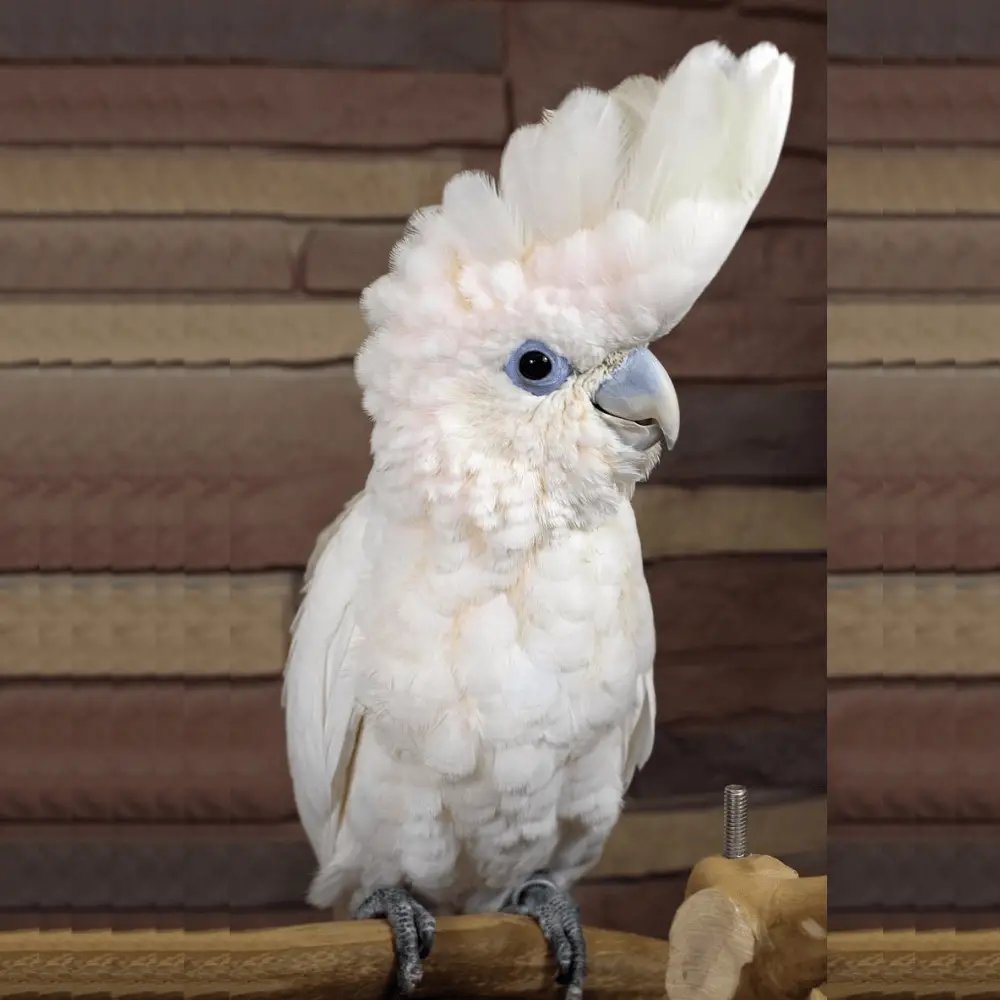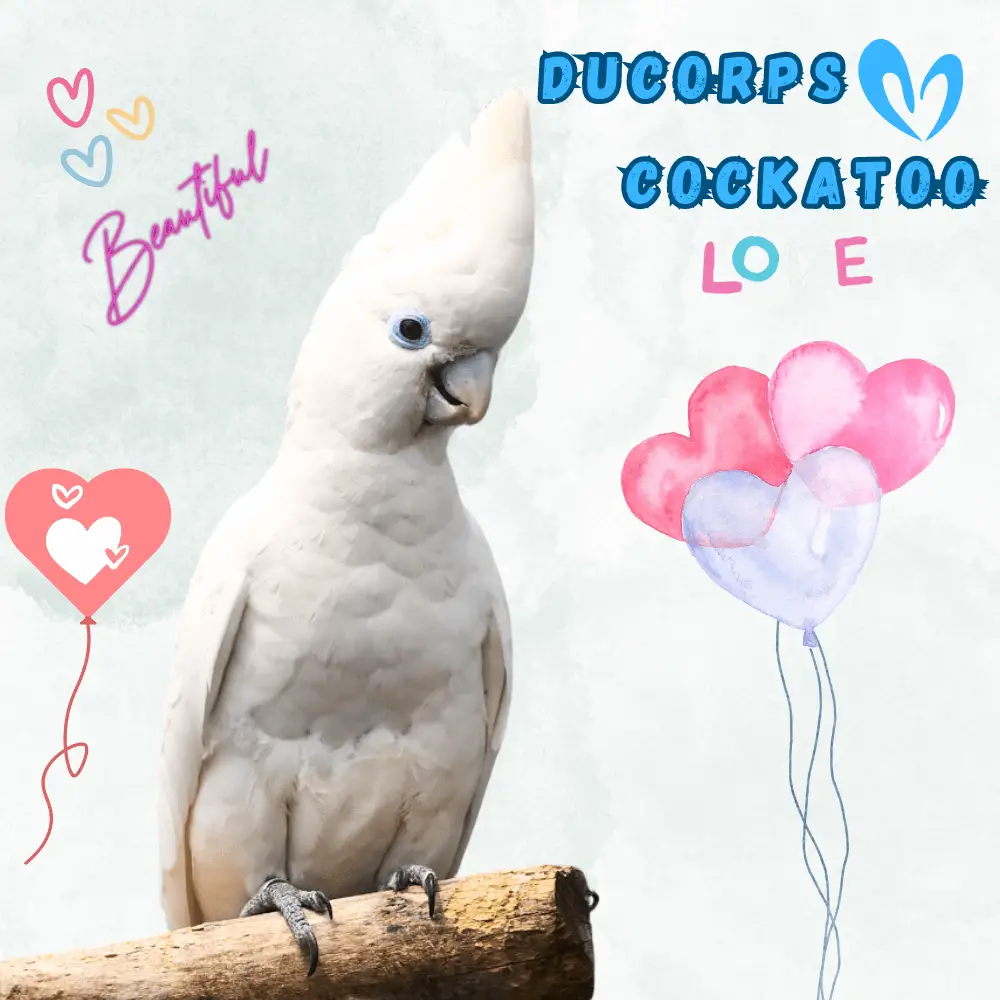Ducorps’s cockatoo: (Cacatua ducorps) is a small cockatoo that is instantly recognizable by its long, triangular crest. Its plumage is almost completely white, except for the lower part of the wings and the tail with an infiltration of yellow color.
The woodpecker is grey. The bare skin around their eyes is pale blue. The iris is dark brown, the legs grey. The females are distinguished by your partner having the iris more reddish.
Ducorps’ Cockatoo is quite similar to Goffin’s Cockatoo living in the Tanimbar Islands. Also appears the Cockatoo corella, although the latter has more bluish and developed the orbital zone.
- Order : Psittaciformes
- Family: Cacatuidae
- Scientific name : Cacatua ducorpsii
- Genus: Cockatoo
- Quote : Pucheran, 1853
- Protonimo : Cacatua ducorpsii
- Origin: Solomon Islands
- Character: Outgoing
- Longevity: 40 to 60 years
- Height: 30 to 35 cm.
Ducorps’s cockatoo Habitat

East from the coastal areas to the mountains; a variety of habitats including forests, gardens in cities, and secondary vegetation. Found up to 1700m; mainly below the 700 m.
Behavior
They are noisy parrots and quite easy to see, although they live mainly in pairs or in small groups. They fly high above the treetops when properly used exposed perches in the upper part of the cup.
The parrots are very cautious, screaming when disturbed.
They have a strong and irregular composition of shallow flapping flight.
Reproduction

In nature children from July to September. They make their nests in the hollows of trees or large branches and they often use the same nest year after year.
The egg is white and there are usually two in a clutch. The eggs are incubated for about 25 days, the young leave the nest 62 days after hatching.
Food
They feed on seeds, berries, fruits, outbreaks, and flowers, as well as insects and their larvae. Occasionally eat the fleshy parts of the “ epiphytes ”.
Distribution

endemic to the Solomon Islands. Its range is from Bougainville ( Papua New Guinea ) to Malaita, Choiseul, New Georgia Yes Santa Isabel. The species is absent in San Cristóbal and surrounding islands.
Ducorps’s cockatoo endangered
- Current IUCN Red List Category: Least Concern.
- Population trend: Stable
The world population is estimated at 100,000 birds and it seems fairly stable.
The marketing of pet birds is one threat to this species, the other is habitat degradation. The latter seems particularly serious, given the logging of forests in the lowlands.
Ducorps cockatoo as pets

Is not very gregarious and they tend to be aggressive with other species and those of their own species. With regard to the human being is a very demanding Parrot. Not everyone is ready to have a white cockatoo.
They often tend to develop conduct problems, unbearable cries, become very destructive…If not receive rigorous education on a very regular basis. This is why it is practical that if you intend to have a cockatoo, it should be done so that it can be accompanied by another or others of its species to prevent it from developing an addiction. excessive and so you can enjoy it without fear of having problems or at least trying to avoid them as much as possible.
I like them a lot of attention. They tend to form strong emotional bonds and are quite outgoing.
Despite the great attraction that having a pet parrot with such characteristics can represent for a person. It is not often a recommended parrot for everyone or rather, almost no one is ready to have a cockatoo with these characteristics.

